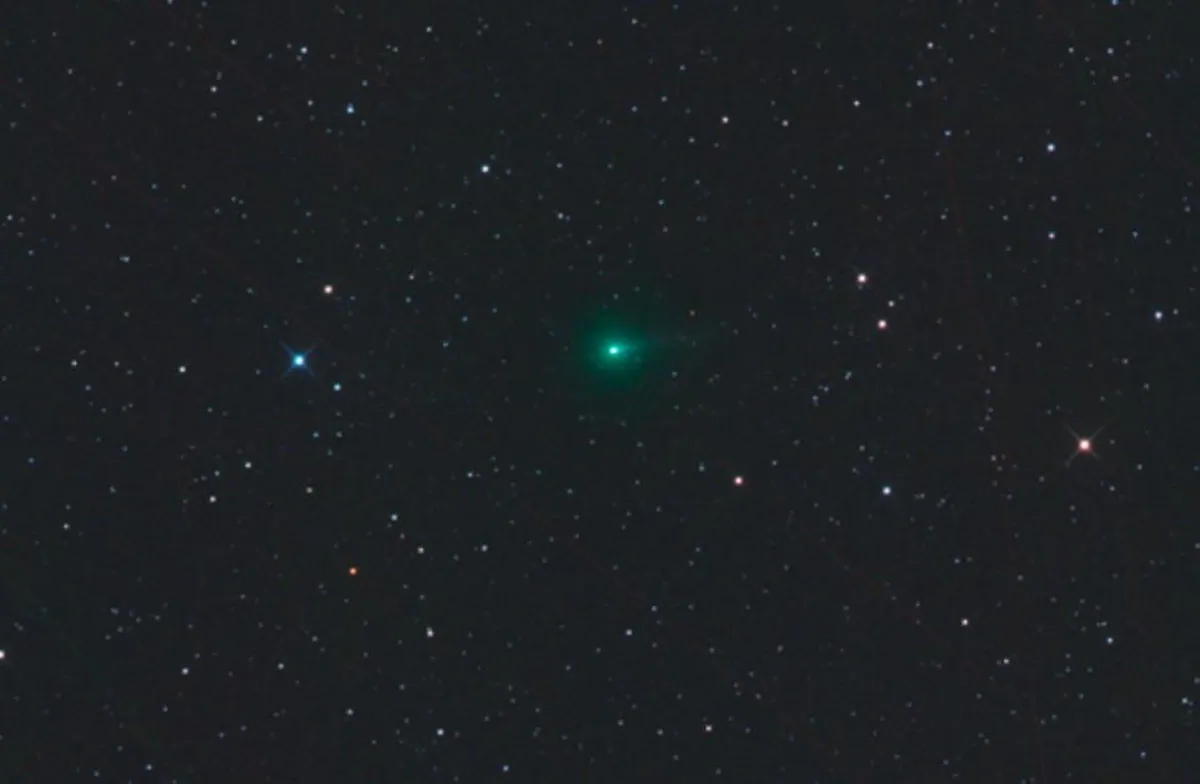
Despite the buzz surrounding interstellar comet 3I/ATLAS, recent observations reveal that it is not currently hiding near perihelion. This week, dedicated amateur astronomers have been diligently scouring the skies, offering clarity amidst the sensational headlines circulating online. It's essential to sift through the hype and understand what this fascinating comet truly represents.
While there has been no shortage of excitement regarding Comet 3I/ATLAS, it's crucial to recognize that many of the wild theories being shared, including conspiracies, are unfounded. NASA has not suppressed information about the comet; instead, the agency's silence is attributed to the ongoing government shutdown. Consequently, the responsibility of tracking this elusive comet has largely fallen on the shoulders of passionate amateur astronomers.
Comet 3I/ATLAS was first discovered on July 2, 2023, by the Asteroid Terrestrial-impact Last Alert System (ATLAS) sky survey. Its exceptionally high orbital eccentricity, exceeding 6, immediately indicated it was an object from beyond our solar system. As a typical comet, 3I/ATLAS displays familiar features: a coma and a dust tail, making it a captivating subject for scientific study.
Research scientist Bryce Bolin from Eureka Scientific noted, “Initial detections of the comet showed that it had a condensed coma, with an offset pointing towards the Sun.” He further explained how the comet began to develop an extended anti-solar tail from early September, likely due to dust particles influenced by solar radiation pressure.
Another intriguing aspect of Comet 3I/ATLAS is its evolving green coloration. According to Bolin, this green hue results from the emission of diatomic carbon (cyanogen gas), a common characteristic of many comets. Current observations suggest that 3I/ATLAS may originate from the thick disk of the Milky Way, indicating it is an ancient object, possibly older than our solar system itself.
Traveling at a staggering speed of 58 kilometers per second relative to the Sun, this comet is moving too fast for us to catch up with it. However, the European Space Agency's proposed Comet Interceptor mission may eventually target such interstellar visitors.
Comet 3I/ATLAS is set to reach perihelion this week on Wednesday, October 29th, at approximately 11:47 Universal Time (UT), coming within 1.36 Astronomical Units (AU) of the Sun. At this point, it will be positioned nearly opposite Earth and will not be generally visible until November, when it will appear low in the dawn sky.
While the comet's trajectory has garnered attention, its low inclination and retrograde path are not particularly extraordinary. In fact, many solar system comets exhibit similar patterns. It's worth noting that the typical behavior of comets means that seeing a bright interstellar comet passing directly near Earth would be a rare occurrence.
As 3I/ATLAS passed close to Mars on October 3rd, various space missions, including NASA's rovers and the European Space Agency's Martian orbiters, were prepared for observations. Interestingly, some observers noted that the comet appeared cylindrical, reminiscent of Arthur C. Clarke’s fictional spacecraft in *Rendezvous with Rama*.
Meanwhile, the European Space Agency has continued its observations of the comet. The Jupiter Icy Moons Orbiter (JUICE) is scheduled to monitor 3I/ATLAS starting in early November from a distance of about 0.4 AU.
As we move into November and December, the comet will become increasingly visible, although it is expected to remain faint, with a maximum brightness of around +11th magnitude. Large backyard telescopes should be able to capture its movement through the constellations Virgo and Leo.
By 2026, Comet 3I/ATLAS will exit our solar system, heading towards the constellation Gemini and the star Zeta Geminorum, continuing its timeless journey through interstellar space.
With 3I/ATLAS being only the third interstellar comet identified, following 1I/Oumuamua in 2017 and 2I/Borisov in 2019, we are witnessing advancements in our ability to detect and study these celestial visitors. The upcoming Vera C. Rubin telescope, set to begin operations in 2025, will enhance our capabilities to identify fainter interstellar objects as they pass through our solar system.
In conclusion, there are enough fascinating details about Comet 3I/ATLAS to fuel scientific inquiry without resorting to sensationalism. As Douglas Adams wisely noted, “A garden is amazing enough, without having to believe that there are fairies in it, too.” The wonders of the cosmos continue to inspire, and Comet 3I/ATLAS is no exception.